The Wayne County Fair
- Home
- Agriculture and Sustainability
- Exhibits
- The Wayne County Fair
by Scott McLellan, revised by Eleanor Barker and Glenna Van Dyke
Of all of Wayne County’s traditions, the County Fair remains one of the most beloved. Established by the Wayne County Agricultural Society in 1849, with the first fair held in 1850, the fair was intended to be a place where farmers could come together, learn new techniques, and compete for prizes. As the County changed over time, so did the fair, evolving from a modest agricultural display to a massive display of Americana, with a diverse array of fairgoers. In recent years however, controversy has arisen as people ask if the fair is doing all it can to bring the community together.
The Wayne County Agricultural Society and the First Fair
Agricultural societies have existed since the nation’s founding, when farmers coming home from the Revolutionary War formed societies to help each other recover and ensure that agriculture would continue. 1 The Wayne County Agricultural Society (WCAS) was established in 1833 and is one of the oldest existing agricultural societies in the country.2 Like other societies of the time, their aim was for the betterment of agricultural practice in the heavily agricultural Wayne County. 3
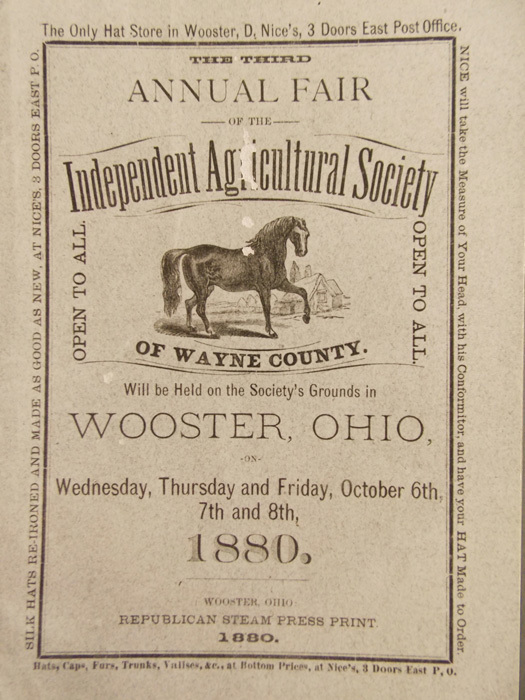
The society disbanded for several years but were able to reorganize in 1849. Concerned about revenue and their sense of identity, they felt there needed to be a way for locals and tourists to understand the area’s agricultural heritage.4 To answer these questions, they took three hundred dollars and set up the first ever Wayne County Fair, which took place a year later on October 10th and 11th, 1850.5 The fair set agricultural standards that had not been seen before, especially in their competitions where high-quality crops won prizes, and brought the farming community together.
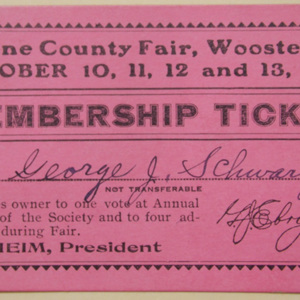
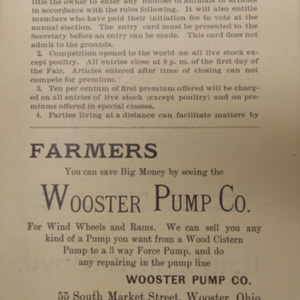
Evolution of the Wayne County Fair
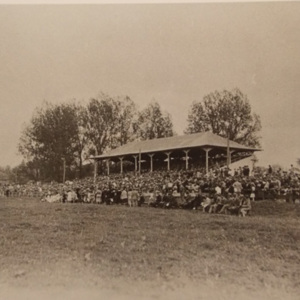
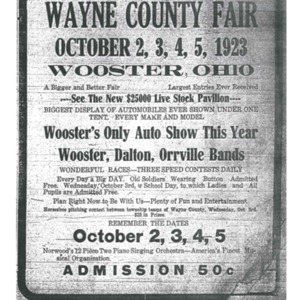
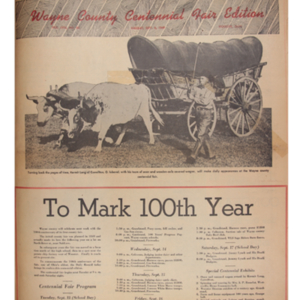
In 1850, the fair was a far cry from the exciting spectacle it is today. Back then, it was a small-budget effort which focused more on economic development than entertainment, and farmers spent those few days displaying their wares and competing for prizes. This was also one of the first times that farmers recorded their methods for the public to see. Awards were given for the highest quality products such as cattle, poultry, wheat, domestic manufacturing, and needlework. 1
In its over 150 years, the fair has endured many difficult periods. During the Civil War, WWI, and WWII, many of the local men were away fighting. 2 The only year, however, that the fair was cancelled was 1952 due to the recent polio outbreak in Wayne County.3,4 Even in dark times however, the fair has kept going, as it is that important to local communities.
As Wayne County developed economically, the fair underwent changes as well.5 With the creation of the College and downtown, not all the fairgoers were involved in agriculture. In order to keep people coming, more non-agricultural attractions have been added, including games, rides, and performances. A longstanding tradition, the fair succeeds because it can incorporate “a good bit of everything for everyone.”6
An Exciting Display: Non-Agricultural Attractions
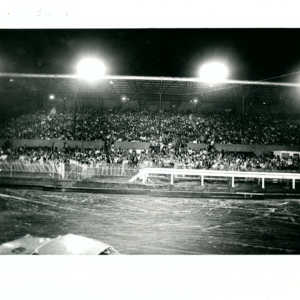
In the late nineteenth century, the economic landscape of the U.S. began to change. Career choices began to expand, and agriculture no longer interested many. To keep the fair going, more nonagricultural attractions were added to bring both farmers and non-farmers alike. These nonagricultural exhibits were instrumental in keeping the fair afloat financially as county funding alone couldn’t support the fair’s expansion. 2, As these attractions were added, more and more non-farmers began to attend. Over the years, the County Fair has seen some extraordinary spectacles, like auto daredevils, rodeos, marching bands, and even ostrich races! 3
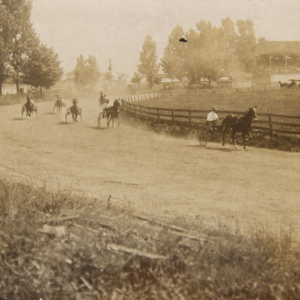
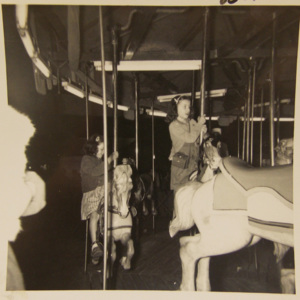
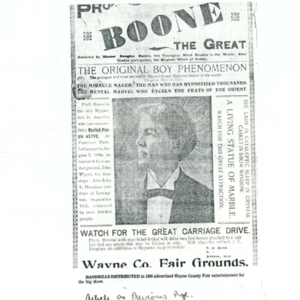
A Place for All?
For years, the Wayne County Fair has seemed like a welcoming place, but with the display of the confederate flag, some would disagree. The fair has come under scrutiny for allowing individual vendors to sell the flag, and these critics point out the racist history that comes with it and the current racist overtones that are often seen with its supporters. 1
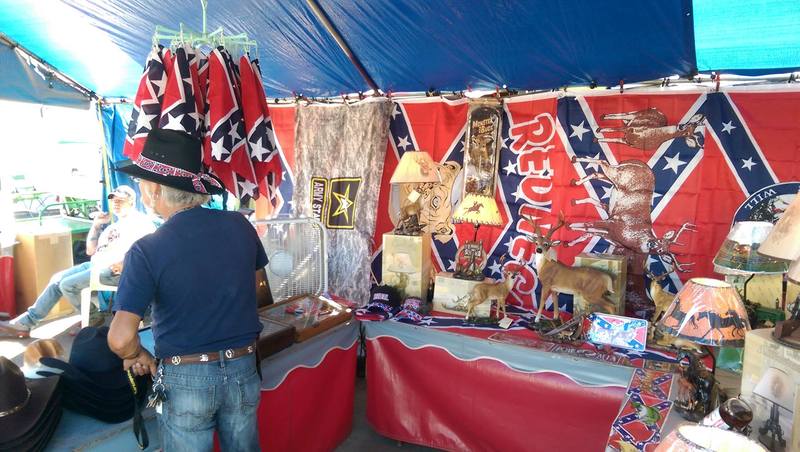
Supporters of the flag argue that it is a part of their heritage, and that Northern figures such as George Washington and Thomas Jefferson, who owned slaves, and Abraham Lincoln, who also held some racist views, don’t receive the backlash that Southern figures do. The counterargument to this, of course, is that monuments to these figures are in recognition of their influence on American history and society. Meanwhile, Jefferson Davis’ legacy is leading secessions and the Confederacy, and any monument for him, no matter the intent, conveys that his actions were acceptable.2 Flag apologists also argue that the Civil War was more about states’ rights than anything else but the flags’ opponents point out that slavery was the number one issue that seceding states were concerned about, and therefore the Civil War was in fact about the protection of slavery.3 They also note that one should not forget the fact that when Wooster lost some of its own men in the American Civil War, they were fighting to keep the Union intact.4
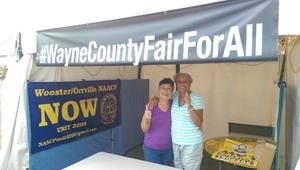
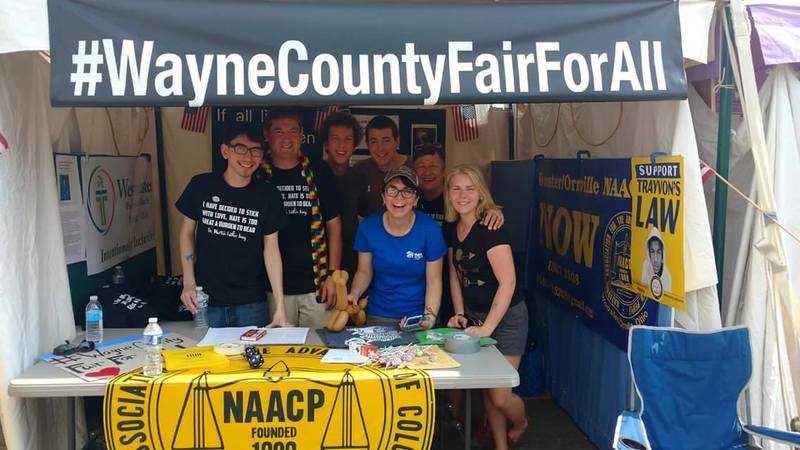
For the 2016 Wayne County Fair, members of the Wooster/Orville NAACP, Westminster Presbyterian Church, and Unitarian Universalist Fellowship of Wayne County, along with students from the College of Wooster, joined forces to create a booth that would talk to fairgoers about white privilege and the racism that is associated with the Confederate flag.5 The Fair has mainly white fairgoers, and many were uncomfortable with the booth, though it also sparked a conversation as to what the Wayne County Fair, and society at large, should do to make sure members feel safe and welcome.6 While the fair started out as a purely agricultural affair, it now has become a space for community education about the important issues of today, such as race and privilege.
Sources by section:
1 Leslie Prosterman, Ordinary Life, Festival Days: Aesthetics in the Midwestern County Fair (Washington: Smithsonian Institution Press, 1995), 49.
2 “County Fair Successful From Start, 100 Years Ago,” The Wooster Daily Record, September 6, 1949, 2.
3 Ordinary Life, Festival Days, 54.
4 Michael T. Marsden, “The County Fair as Celebration and Cultural Text,” The Journal of American Culture 33, no. 1 (March 22, 2010): 24, accessed June 13, 2017, doi:10.1111/j.1542-734X.2010.00727.x.
5 Ohio Agricultural Report: Report of the Wayne County Agricultural Society, 1850.
6 “County Fair Successful From Start”
1 Ohio Agricultural Report: Report of the Wayne County Agricultural Society, 1850.
2 “County Fair Successful From Start, 100 Years Ago,” The Wooster Daily Record, September 6, 1949, 2.
3 Earl E. Kleinschmidt, Mabel Abbott and E. Ilah Kauffman, “The Health Department and Poliomyelitis: Administrative Factors in the 1952 Outbreak in Wayne and Medina Counties, Ohio,” Public Health Reports (1896-1970) 67, no. 11 (1952): 1109-1114. doi:10.2307/4588296.
4 Paul Locher, “Wayne Fair’s secretary celebrates 25th anniversary of county’s biggest annual reunion,” The Daily Record, September 13, 2010, , accessed June 03, 2017, http://www.the-daily-record.com/local%20news/2010/09/13/wayne-fair-s-secretary-celebrates-25th-anniversary-of-county-s-biggest-annual-reunion.
5 “County Fair Successful From Start.”
6 “Secretary celebrates 25th anniversary.”
1 Leslie Prosterman, Ordinary Life, Festival Days: Aesthetics in the Midwestern County Fair (Washington: Smithsonian Institution Press, 1995), 64-5.
2 “County Fair Successful From Start, 100 Years Ago,” The Wooster Daily Record, September 6, 1949, 2.
3 Rules and Regulations of the One Hundred-sixth Annual Wayne County Fair: Premium List, September 13, 1955.
1 Andries Coetzee, “Mr. Don Reichert, President of the Wayne County Fair Board: Tell The Wayne County, Ohio Fair Board to cease approving the Confederate Flag,” Change.org, June 2016, , accessed June 08, 2017, https://www.change.org/p/mr-don-reichert-president-of-the-wayne-county-fair-board-tell-the-wayne-county-ohio-fair-board-to-cease-approving-the-confederate-flag?recruiter=10581025&utm_source=share_for_starters&utm_medium=copyLink.
2 Robert Siegel and James Loewen, writers, “Rejection Of Flag Exposes Larger Truths About The Confederacy,” in All Things Considered, transcript, National Public Radio, July 2, 2015, July 2, 2015, accessed June 12, 2017, http://www.npr.org/2015/07/02/419554834/rejection-of-flag-exposes-larger-truths-about-the-confederacy.1.
3 Carlos Lozada, “How people convince themselves that the Confederate flag represents freedom, not slavery,” The Washington Post, June 19, 2015, , accessed June 14, 2017, https://www.washingtonpost.com/news/book-party/wp/2015/06/19/how-people-convince-themselves-that-the-confederate-flag-represents-freedom-not-slavery/?utm_term=.fe743b4cff72.
4 “County Fair Successful From Start, 100 Years Ago,” The Wooster Daily Record, September 6, 1949, 2.
5 Andries Coetzee, “Progress in Struggle for Racial Justice at the Wayne County Fair,” Westminster Presbyterian Wooster, August 26, 2016, , accessed June 08, 2017, http://www.westminsterpresbyterianwooster.org/blog/2016/08/26/progress-in-struggle-for-racial-justice-at-the-wayne-county-fair.
6 Linda Hall, “New Fair Booth Tackles Confederate Flag Sales, Social Justice.” Daily Record, Sep 14, 2016, 1, https://search.proquest.com/docview/1901427551?accountid=15131.
How to cite this page:
MLA: “The Wayne County Fair.” stories.woosterhistory.org, http://stories.woosterhistory.org/the-wayne-county-fair/. Accessed [Today’s Date].
Chicago: “The Wayne County Fair.” stories.woosterhistory.org. http://stories.woosterhistory.org/the-wayne-county-fair/ (accessed [Today’s Date]).
APA: (Year, Month Date). The Wayne County Fair. stories.woosterhistory.org. http://stories.woosterhistory.org/the-wayne-county-fair/

